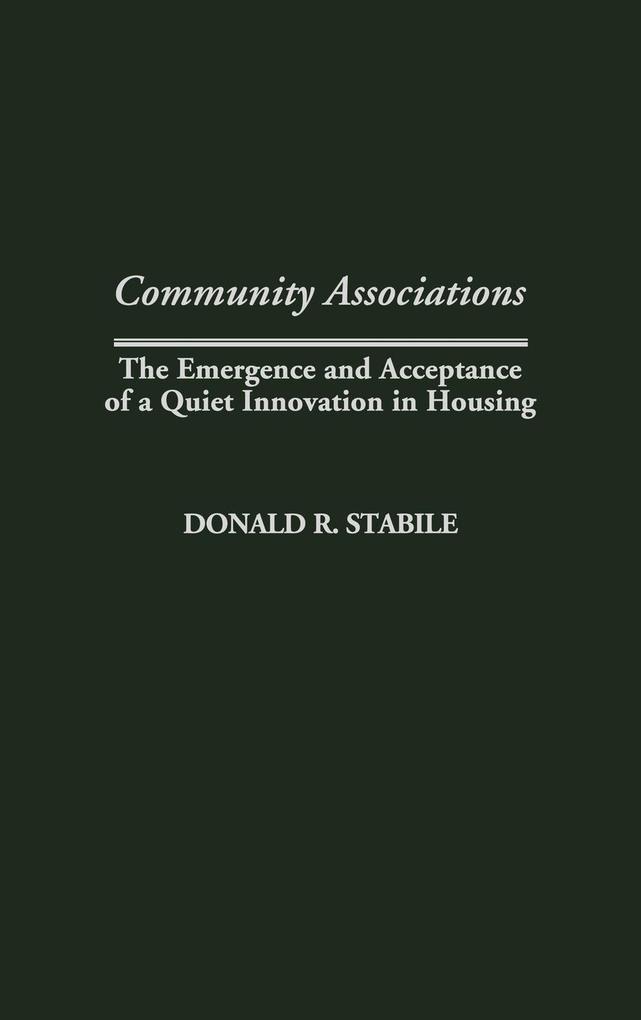
Zustellung: Mi, 21.05. - Sa, 24.05.
Versand in 1-2 Wochen
VersandkostenfreiBestellen & in Filiale abholen:
Throughout history human beings have formed communities spontaneously with residences constructed haphazardly. Today a new type of community is emerging-one planned from the start regarding housing location, style, and governance. These Community Associations (CAs) have increased in number from 500 in 1960 to 205, 000 in 1998. This book explores the issues surrounding this housing innovation and provides a history of community associations and their membership organization, the Community Associations Institute (CAI).
The book explores the process of trial and error in the design of CAs and how the CAI was set up to help them work. It opens with a consideration of the economics of land, housing, and community associations; explores the social, intellectual, legal background for CAs; and surveys their development in the United States. After considering the FHA's role, the book focuses on the development of the CAI .
The book explores the process of trial and error in the design of CAs and how the CAI was set up to help them work. It opens with a consideration of the economics of land, housing, and community associations; explores the social, intellectual, legal background for CAs; and surveys their development in the United States. After considering the FHA's role, the book focuses on the development of the CAI .
Inhaltsverzeichnis
Introduction: A Quiet Innovation in Housing
The Economics of Land, Housing and CAs
Common Property: A Social and Intellectual Background
The Development of CAs in the United States
Government, Business, and Housing: Early Years of Cooperation
The Promotion of CAs: A Government-Business Collaboration
The Community Associations Institute: Formation and Growth
The Community Associations Institute: A Period of Change
The CAI and the Management of CAs
The CAI and Community Building in CAs
A Perspective on CAs and the CAI
Conclusion: A Revolution in Housing
Selected Bibliography
Index
The Economics of Land, Housing and CAs
Common Property: A Social and Intellectual Background
The Development of CAs in the United States
Government, Business, and Housing: Early Years of Cooperation
The Promotion of CAs: A Government-Business Collaboration
The Community Associations Institute: Formation and Growth
The Community Associations Institute: A Period of Change
The CAI and the Management of CAs
The CAI and Community Building in CAs
A Perspective on CAs and the CAI
Conclusion: A Revolution in Housing
Selected Bibliography
Index
Produktdetails
Erscheinungsdatum
30. Juni 2000
Sprache
englisch
Seitenanzahl
256
Autor/Autorin
Donald Stabile
Verlag/Hersteller
Produktart
gebunden
Gewicht
571 g
Größe (L/B/H)
235/157/20 mm
ISBN
9780313315718
Entdecken Sie mehr
Bewertungen
0 Bewertungen
Es wurden noch keine Bewertungen abgegeben. Schreiben Sie die erste Bewertung zu "Community Associations" und helfen Sie damit anderen bei der Kaufentscheidung.










